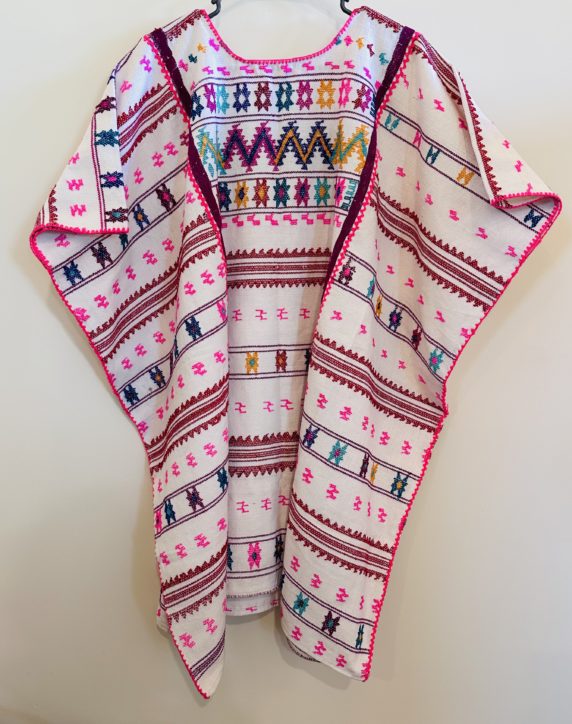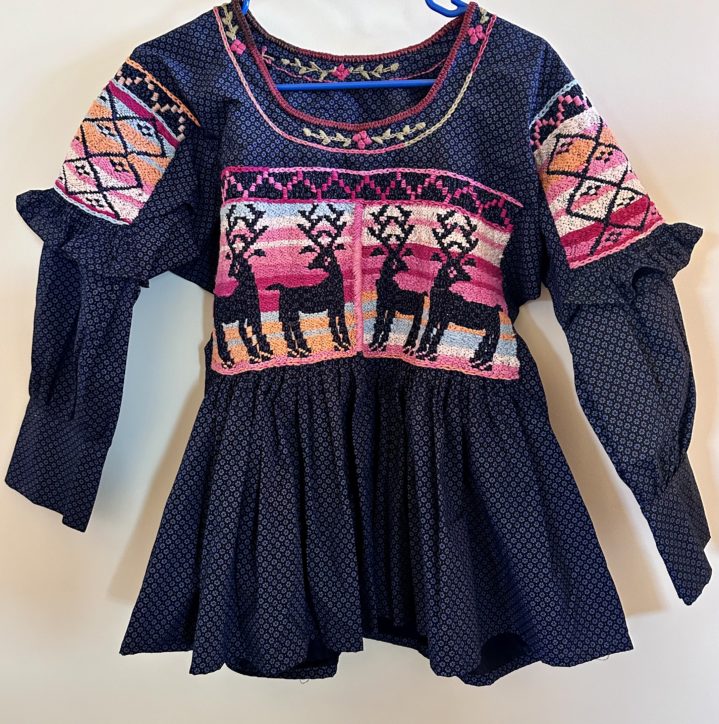Under the Palace of the Governors portal sit Native American artisans, displaying their craft. They may sit on small camp stools or cross-legged on a blanket waiting for us. Their hang tags tell their name, their pueblo, and authenticate what they sell. This is a juried system.

The portal at the Palace of the Governors calls to me because it is a place of discovery. I have spoken with gallery owners in Taos and Santa Fe who tell me they found artisans they represent here along this arcade. A keen eye can differentiate quality


Who is able to sell each day is based on a lottery. Just as I visit artisan studios throughout Mexico to understand the craftsmanship and to create connection, when I find someone who makes something extraordinary, I want to know more. To see how something is made is to understand the calculus of time and materials, passion, art and history. This is how we put value on something handmade.

It’s more than that. To see how people live and work, to meet their families, to understand their culture and origins, hear who they learned from and appreciate the traditions of creativity, gives added meaning to the experience. It becomes more than shopping. It is the next level to an ancient practice of sharing, bartering, collaboration and respect.


We got to the Plaza early that day, before 9:30 a.m. Leslie spotted Warren Nieto first, noticed his fine heishi beadwork and mosaic inlay. His thunderbird design earrings were perfectly executed. There were three pair, one for her, one for Kaola and one for me. We struck a bargain for the three and paid cash. I asked if we could visit his studio to see how he constructed his pieces and get a demonstration. We set a day and time.


Eugene Sanchez was also at the Palace portal that day. I didn’t recognize him but I recognized the fine, tiny pieces of gemstone inlay work I bought from his wife Georgia two years ago. I asked him if we could visit, too.


Eugene’s story is not unique. He’s a military veteran. He worked construction in northern California, had a back injury and returned to his family roots to revive their Native American jewelry making. He learned from his grandmother and father. The work is extraordinary.

I had traveled the Rio Grande River Valley pueblos in the 1970’s, but had never visited the Kewa (Santo Domingo) village. I was more interested in pottery then. This would be an adventure. We drove south on I-25 for about 40 minutes and then turned off to head west. In the distance, beyond the vast sand-colored desert was a ribbon of green cottonwood where the river flowed fast. Summer rains and winter snow melts ensure an abundance of water.

Warren Nieto lives with his family in a new modular home behind a vacant trading post, a vestige of the old west and tourism dream that didn’t materialize. He worked carpentry and framing before he returned to the craft he earned from his family. He’s 32 years old.

We were told to respect what your grandparents taught you, he says. Growing up, I learned to make heishi beads and tend the corn fields. We were taught that jewelry making was something to come back to. I do it to create something that others appreciate and value.
Warren speaks Keres to his son, who hovers nearby. This is an ancient language, he explains, and he’s not worried about losing it. The Kewa people adhere to tradition. He says its linguistic roots are Aztec (Nahuatl). I tell him common belief is that the Aztecs came from the north into what is now Mexico in search of a fertile land where the eagle would perch on a cactus, overcome the serpent and lead them to water. Is it likely they originated from this part of New Mexico?

I am organizing a 2020 folk art study tour into the tribal areas of New Mexico with Sheri Brautigam, who lives in Santa Fe. We will visit a curated group of jewelers, weavers and potters, and attend a Native American festival. If you are interested in joining us, please send me an email so I can add you to the announcement list: email norma.schafer@icloud.com


























Santa Fe, New Mexico Consignment & Thrifty Shopping: The List
Driving from Denver, Colorado, to Santa Fe, New Mexico, with stops back and forth in Taos and Abiquiu–Ghost Ranch (to pay homage to Georgia O’Keeffe), I am constantly reminded that this land was once Mexico. The landscape reminds me of Oaxaca: expansive with arroyos, crevices, looming 12,000 foot mountains, scrub oak, sign posts telling of land grants established soon after the Spanish Conquest.
My pilgrimage to visit friends along the way embellished my road trip adventure on the back roads of America’s Southwest. In Taos, my friend Winn gave me a list of thrift and consignment shops to visit in Santa Fe. She said sometimes there is Native American jewelry, too. That hooked me!
This is especially interesting since Santa Fe is that eclectic mix of old-timers who have been there for forty years (and collected a few things), and socialites who come for the summer season. They might be oil and gas heiresses from Texas and Oklahoma who seek a milder summer climate. They come for the opera and the markets: International Folk Art Market, Spanish Market, and Indian Market.
They shop on the Plaza at Santa Fe Dry Goods filled with Euro-designer labels, attend galas, frequent cocktail parties, and then shed barely worn attire. Here’s where these clothes end up:
Gaspeite and Sterling Silver Navajo bracelet, thrift shop find
If you are destined for Santa Fe this summer to volunteer or attend the International Folk Art Market (or any of the others), you might find this bonus thrifty shopping itinerary worthwhile. I did!
Like this:
11 Comments
Posted in Cultural Commentary
Tagged consignment shops, New Mexico, Santa Fe, thrift shops